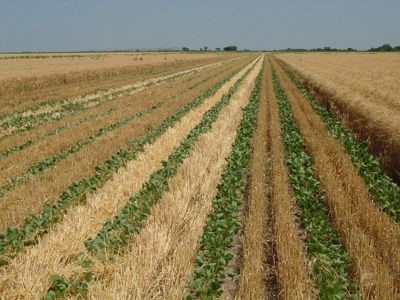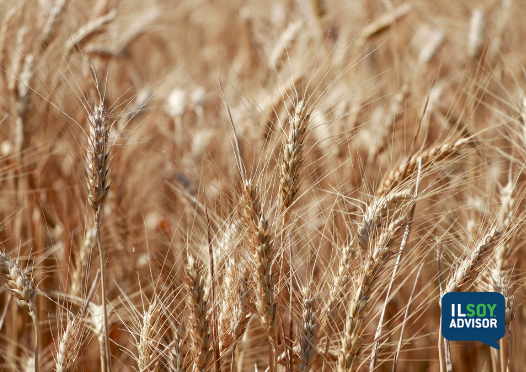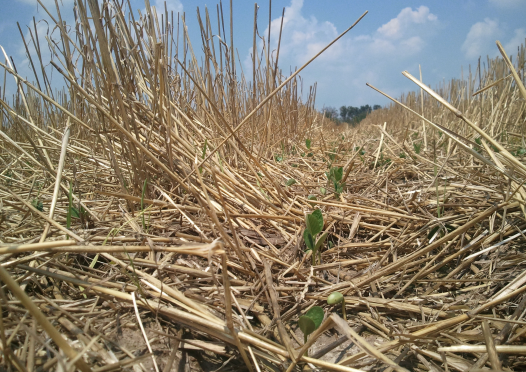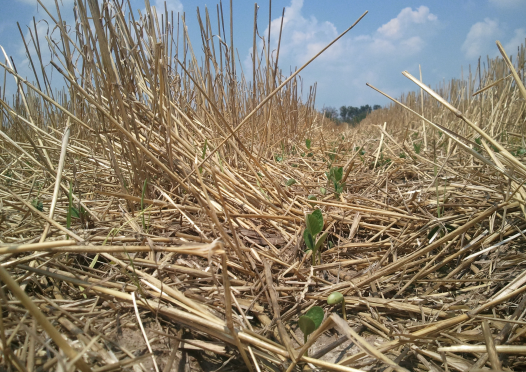BLOOMINGTON, Ill. — The Illinois Wheat Association (IWA) in conjunction with the Illinois Soybean Association is excited to announce the Double Crop Farmers Forum, to be held February 8, 2022, at the DoubleTree by Hilton in Mt. Vernon, Illinois.
Presentations at the conference include best practices for maximizing yields of double-cropped wheat and soybeans, methods to manage diseases, fertilizer price update, USDA programs, market outlooks,... Read More →
ILSOYADVISOR POST
Relay Cropping Soybeans
June 28, 2019
Many producers in Southern Illinois double-crop soybeans after wheat and this creates an additional opportunity for revenue for the farm. In addition, winter wheat acts as a cash cover crop and planting soybeans into wheat stubble adds living roots which supports biological activity in the soil when growers may otherwise let the field lie fallow.
Producing double-crop soybeans is a challenge because you’re planting a crop outside its prime window when weather is drier and hotter. And there is always a risk that it won’t rain either at planting or later in the summer. This limits investment since there might not be a crop to harvest. This very mindset often limits double-crop soybean yield potential.
However, in double-cropping areas, growers have the season to produce a crop that can nearly rival full season beans if the weather cooperates, so it pays to invest in the right agronomy. But if you farm north of Interstates 70 and 80, double-cropping might seem unwise because wheat harvest can be 2 to 4 weeks later and soybeans may not be planted until July, shortening the growing window to less than the 90 days required to take a soybean crop to yield.
Another option is to relay crop soybeans into wheat. Relay cropping is a version of double-cropping, where the soybean crop is planted into the wheat crop before it’s harvested, rather than waiting until after harvest as in true double-cropping. In this way, both crops share a portion of the growing season, increasing solar radiation and heat available to each crop.
Relay cropping has the same advantages as a traditional double-crop system.
- Potential to reduce nitrate leaching (wheat acts as a scavenger crop).
- Increased carbon sequestration.
- Increased income for producers.
Unfortunately, a relay system is not without risk.
- Soybean planting can stress an actively growing wheat crop and reduce yield from what would be expected of a solo wheat crop.
- Wheat harvest may stress, clip off or even damage the growing soybean crop.
- Wheat straw can’t be baled off and sold.

Soybeans relayed cropped into wheat. Courtesy University of Nebraska Extension.
Relay cropped wheat and soybeans are managed much the same as double-cropped. However, there are some different management requirements.
- Wheat can be planted in 15-inch rows or drilled (7.5 inches), closing every other seed meter and at 18 to 24 seeds per foot.
- Select a wheat variety that is vigorous and manage so it doesn’t lodge to allow higher cutting heights.
- When planting soybeans tire spacing, and tire width, should match the space available between wheat rows.
- When harvesting wheat, employ a pusher to gently lay bean plants over so they aren’t clipped off, and spread straw and chaff evenly across head width.
- Plant soybeans in late May or early June and the same rate as full season beans.
- Plant the same maturity as full season soybeans.
- Remember, apply the same best management practices as you would to full season soybeans or a single wheat crop.
Relay cropping requires a greater level of management. Wheat must be planted during the soybean and corn harvest season in the fall just after the Hessian Fly Free date competing with other harvest and fall activities. And planting soybeans into a standing wheat crop is a new process that growers must adjust to.





Comments
Add new comment